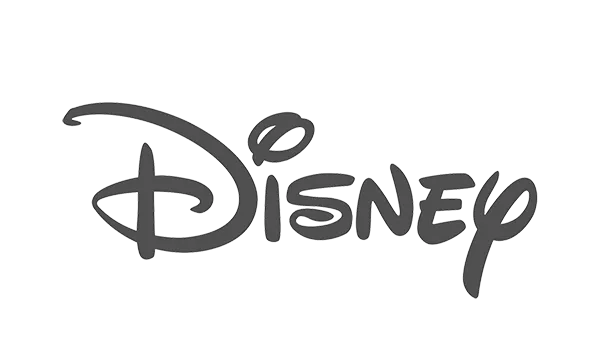Even the most successful and well-planned initiatives can go unnoticed if they’re not properly articulated. While there are many methods you can use to describe the success of your team, nobody can argue with facts and statistics.
We recently hosted a panel discussion on training initiatives HR teams should prioritize in 2025. Here are some key insights about showing the value of these initiatives to leadership.
Utilizing Real Formulas to Calculate ROI
Professionals have been using real formulas to calculate the ROI of their HR initiatives for years. Quantifying information in this way provides clear and meaningful insight into metrics like productivity, turnover, revenue generation, and more.
“I'm big into investing in the stock market and other places as well. Same thing, right? But in HR, in talent development, you’ve got to think about your employees and performance metrics. Whether it is improved productivity, tracking errors, or quality of work for people.” – Andy Storch, Talent Development Expert, Speaker, and Author of Own Your Career Own Your Life
Cost Per Hire
According to recent benchmarks from the Society for Human Resource Management (SHRM), the average cost per hire in the U.S. is approximately $4,683. This varies, of course, based on industry, job title, and even location, but it does serve as a realistic goal for many organizations.
One of the most common formulas, the cost per hire represents how much it costs to hire new employees.
To perform this calculation for your own organization, divide the overall cost of hiring by the overall number of new hires. If your organization spends $500,000 on your next hiring initiative and ultimately hires 100 new employees, the total cost per hire would amount to $5,000 – just above the national average as stated by SHRM.
We can also think of this number as a saving when employees move through the organization via internal mobility - a benefit of offering career development and training opportunities.
Employee Productivity
In many cases, you can quantify employee productivity, too. This formula works by dividing the employee’s total input by their output. Consider a factory worker who completes 250 units within a 40-hour work week. If they accumulate eight hours per day, their total productivity could be measured in a number of ways:
- 1,000 units per month divided by 160 hours per week
- 250 units per week divided by 40 hours per week
- 50 units per day divided by 8 hours per day
All of these calculations have a final sum of 6.25 units per hour. They all provide clear, concise, and straightforward expressions of an employee’s total productivity.
Although each job is different, an employee with a developed skillset can achieve more and apply critical thinking to their role.
Cost of Turnover
Before you can determine the true cost of turnover, you’ll need to collect some basic statistics. Applicable costs include:
- Replacement costs: Expenses incurred for onboarding and training of the former employee.
- Separation costs: Legal fees, unemployment claims, and severance pay.
- Training costs: How much it costs to train the former employee’s replacement.
- Productivity costs: The cost of lost output due to the former employee’s departure.
Once you’ve gathered the data, add these numbers together and divide the final sum by the total number of employees who have exited over any given timeframe. Remember to include those who have been laid off, fired, and even those who quit on their own accord.
The ROI of training initiatives largely lies in retention. Employees are more likely to stay in an organization that offers them opportunities to upskill and move forward with their career goals.
Time to Hire
Find out exactly how long it takes for a new recruit to make it through the initial hiring process.
To calculate time to hire, you’ll need to consider three dates: the day the job was posted, the day the recruit entered your hiring pipeline, and the day they ultimately accepted your job offer. From here, simply subtract the day they entered your pipeline from their acceptance date.
If the candidate entered your hiring pipeline five days after the job was posted, for example, and they accepted your offer 30 days later, the final time to hire would be 25 days.
Implementing Goal-Setting Frameworks
According to Gartner, only 29% of HR leaders believe that their organization’s HR plan is fully integrated with their business and goal-planning needs. If you want to bridge that gap in your organization, consider implementing a goal-setting framework right away. Not only will a goal-setting framework streamline the entire process, but most systems result in tangible, actionable data.
SMART Goals
Perhaps the most popular goal-setting framework in use today, SMART goals follow a strict protocol that is useful when determining the ROI of your HR initiatives. According to the SMART framework, all goals should be:
- Specific
- Measurable
- Achievable
- Relevant
- Time-bound
By ensuring your HR initiatives and goals meet the above criteria, you make it easier to track success, generate reports, and translate results to your key stakeholders.
Objectives and Key Results (OKRs)
We hear a lot about key performance indicators (KPIs), but they’re just a small part of a bigger framework known as objectives and key results (OKRs). As the name suggests, this framework is focused on establishing clear objectives and tracking your progress through various milestones, or key results.
As an example, your HR team might set an objective to hire 50 new employees within a year. In this case, some key results might include:
- Posting job openings online by the end of the first month
- Starting the interview process by within the first eight weeks
- Onboarding 25 employees within the first six months
Generally speaking, achieving these key results is a good sign that you’re on track to meet your original goal within a year.
Synchronizing HR Initiatives With Your Business Goals
One of the key steps in future-proofing your workforce involves synchronizing HR initiatives with your business goals. It’s easier said than done, but as long as you’re taking an honest look at the current state of your organization while maintaining clear goals for the future, then you’re already on the right track.
























